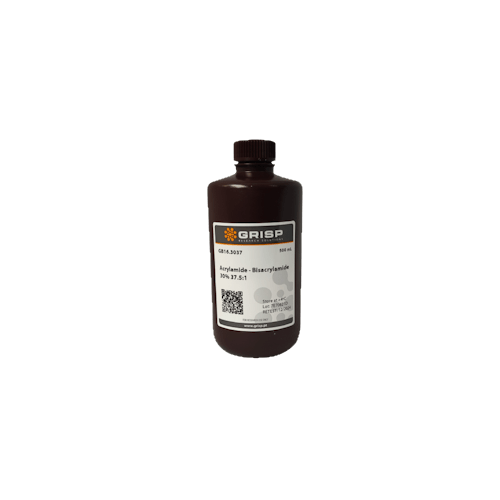Features
Principle
The range of protein sizes to be separated is determined by the pore size of a polyacrylamide gel. Control of the pore size is accomplished by regulating both T and C. The relationship between T and pore size is nearly linear; Gels with a higher percentage of T have smaller pores, and are used to separate smaller proteins. However, the relationship between C and pore size is more complex with a minimum occurring at about 5% bisacrylamide. A ratio between acrylamide and bisacrylamide of 19:1 (5% C) is suitable for the separation of small peptides, whereas a ratio of 29:1 [this product] is commonly used for the separation of “normal sized” proteins. High molecular weight proteins are best separated using a 37,5:1 mix ratio.
?Download the protocol for more informations
Protocols
1. After Western Blotting, image the blot for permanent record, and then rinse the blot with 20ml of water for 5 minutes at room temperature, using an orbital shaker.
2. Decant and incubate the membrane in a container containing 10-20ml of GRS Stripping Buffer (membrane must be completely covered) at room temperature for 5-10 minutes, using an orbital shaker
3. After stripping, wash the membrane extensively (min 3x) with wash buffer (e.g. TBS(T) or PBS(T)).
4. After washing, block the membrane as usual.
5. After blocking the membrane is ready for the next detection with other set of antibodies.
Note: Because Stripping may reduce signal intensity, it is recommended to probe first for the antigen with the lowest level of expression. If more stringent stripping is required, one could add reducing agent (DTT or β-mercaptoethanol) to the stripping buffer and/or heat the blot during the stripping procedure.

